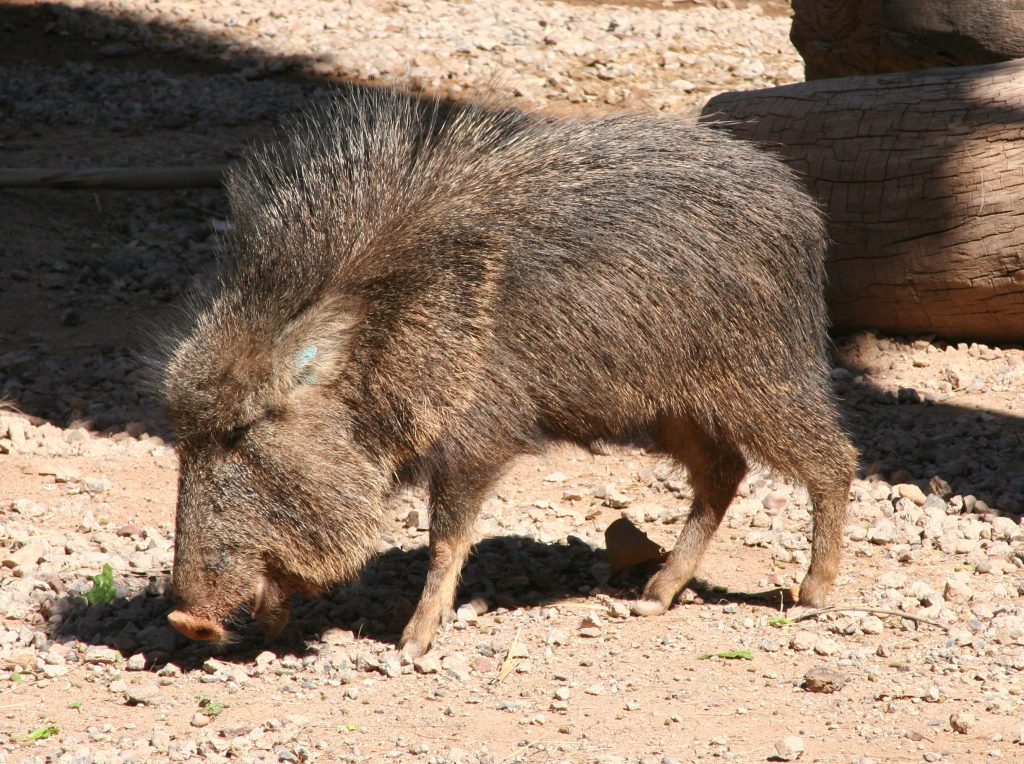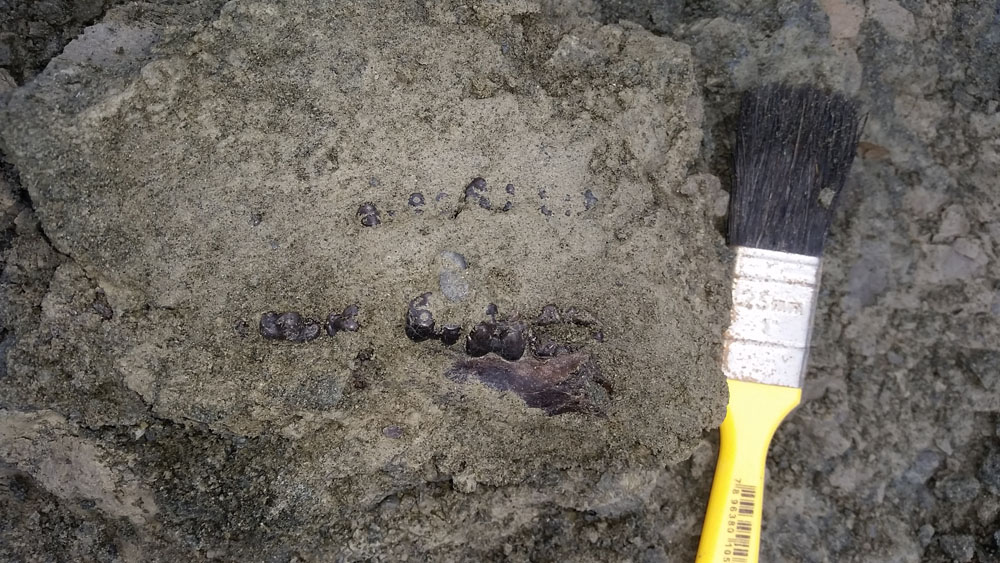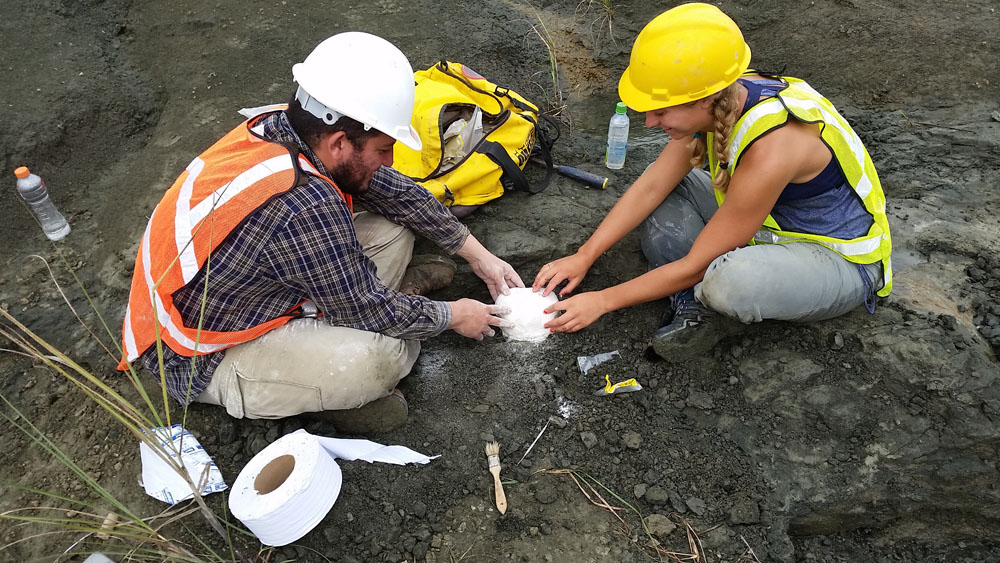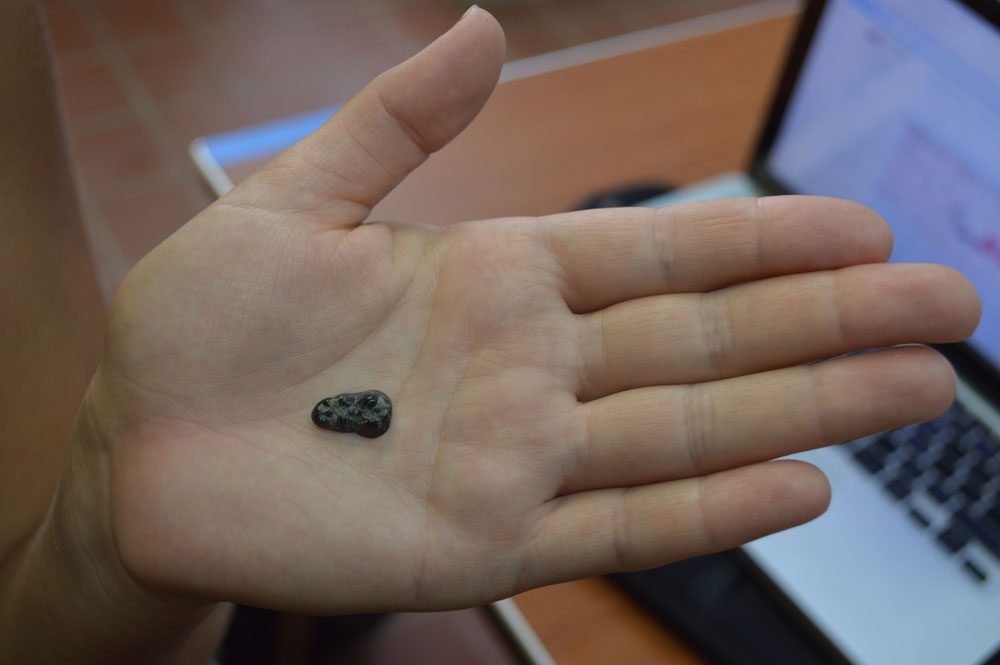Today at Cartagena “hill,” the cohort [..Jorge] encountered two peccary findings about 500 feet away from each other: an isolated third molar and a partial lower jaw.
These were the only finds for the day, but the intact jaw and preservation of both the jaw and the individual tooth were really exciting.
Peccaries are a “New-World Pig,” omnivorous small mammals that still live in North America today. The genus of peccary found in these Miocene deposits, Cynorca, means “dog-whale.” We are unsure why.
We used the low rounded cusps of this molar to identify it as a peccary. Peccaries are omnivores, and this shape of tooth [similar to humans] is used for slicing tough plant material like roots, and crushing hard plant material like seeds.
This isolated molar can be identified as a lower molar because of its long, rectangular shape. The proportions of an upper molar would be more of a square. Generally 3rd molars also have an extra posterior cusp when compared to the anterior molars and premolars which have only two cusps.



